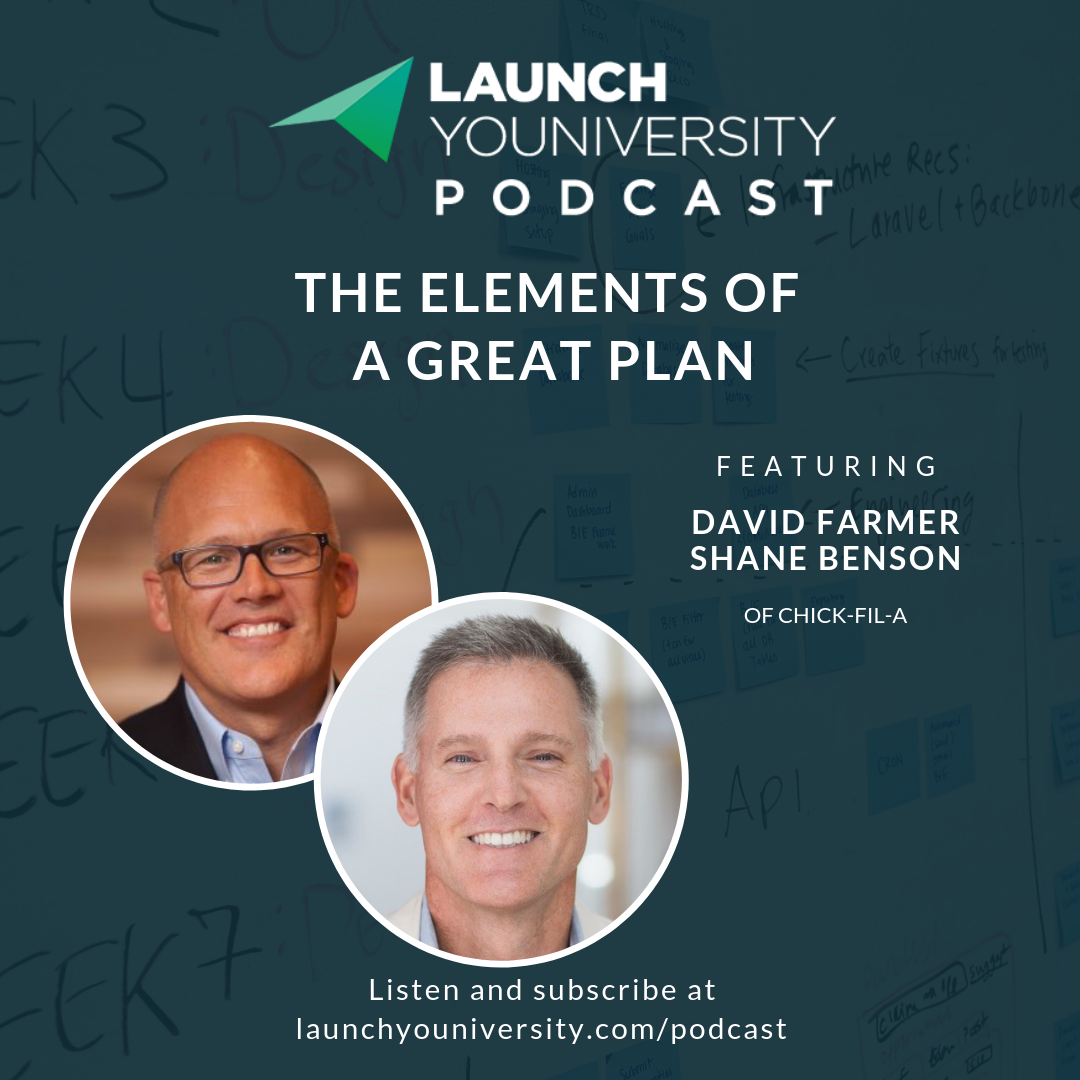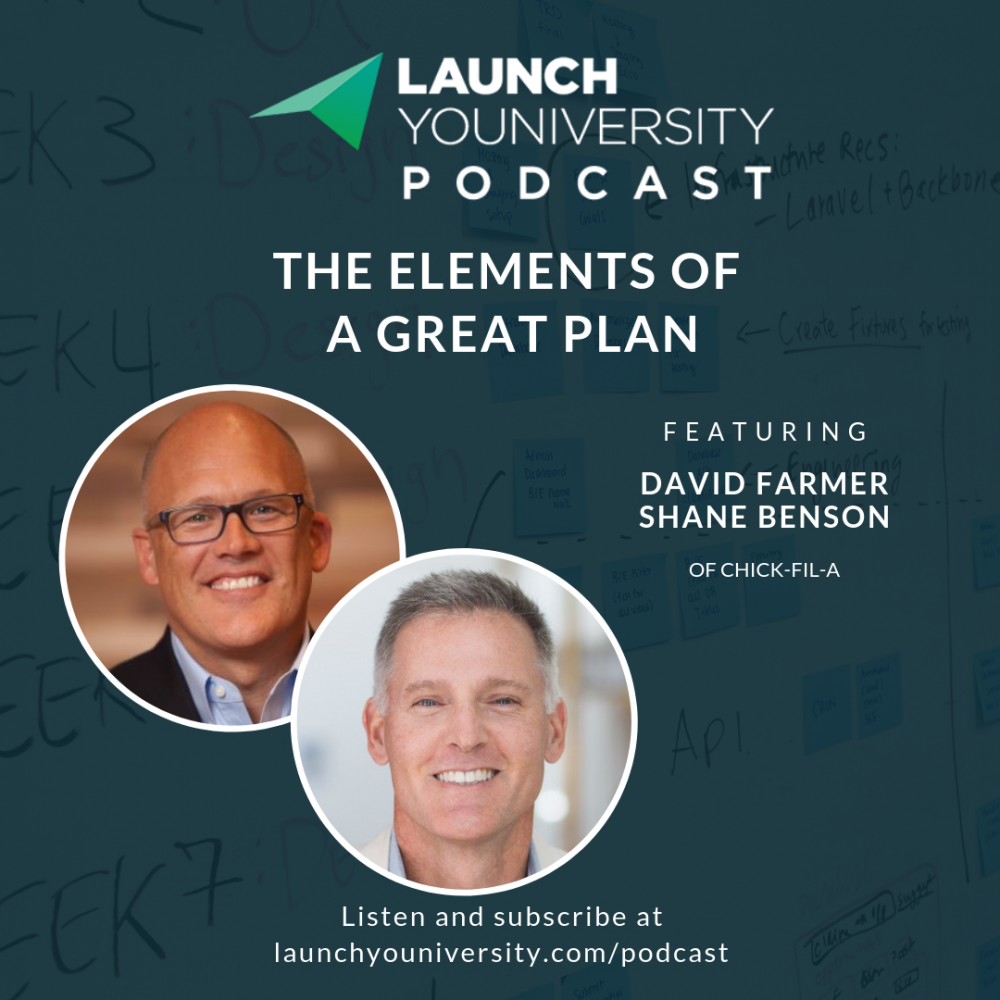
You can also listen to the Launch Youniversity Podcast on Google Play, Stitcher and TuneIn.
Summary:
Welcome to episode 138 of the Launch Youniversity podcast. On this episode, David Farmer and Shane Benson discuss the necessity for leaders to plan, the elements of a great plan, and the different strategies to make the planning process more fun.
This episode is unique in that David and Shane recently completed the planning of a few big moves within Chick-fil-A, and this process catalyzed multiple learnings that they want to share with you. Tune-in to learn about the RAPID decision-making process and its importance, the resource triangle that everyone must wrestle with, and the nine components that must be present for a plan to be effective.
Links + Resources
- Rocket Fuel [Goal Setting Guide]
- Measure What Matters: How Google, Bono, and the Gates Foundation Rock the World with OKRs by John Doerr
- LYP 131: Living By Design, Not Default with Darrah Brustein
- Bain & Company’s RAPID Decision Making Model [via ToolsHero.com]
- Ask us a question!
Three Takeaways:
1. Vision vs. Goals: The Role Each Plays in a Great Plan
Every great plan needs both a clear vision and well-defined goals, but what is the difference? Vision is where every great leader and team starts as they begin to plan. The vision, as defined by Shane and David, is the destination that your organization is pursuing. This vision should create a passion within your team to push into new opportunities and should address the critical problems in the market that you plan on confronting. A vision is broad, inspiring, and ultimately directional.
Vision, however, is not the path we walk to get to our destination; it is the destination itself. We define the path we walk by the goals we set to get us to the destination. Goals are specific and will lead you to the desired future that your organization is pursuing. These goals can be KPIs (key performance indicators) or OKRs (objectives and key results). No matter the form they take, the key is to make sure your goals are specific so that they can lay the foundation for your execution strategy.
2. The Resource Triangle
Every organization seeking to develop a great yearly or quarterly plan will need to wrestle with the resource triangle. Every effort can be distilled down into three limited resources: time, money, and people. Each leg of the triangle is inversely in relationship with the others. So, for example, if you have a project plan and you have a specific project launch date, then your time leg of the triangle is fixed. Thus, as you increase financial resources, you can outsource some parts of the effort and use less of your human resources. However, if you do not have the financial resources to outsource, you will need the help of more people within your organization to hit your launch deadline.
3. Decision-Making Rights: The Key To Your Plans Follow Through
Even the best-laid plans can lose momentum if decision-making rights are not defined clearly. As David and Shane point out, the question to be asked is, who owns the decision? The answer to this question can be that the group owns the decision through a consensus model, which is powerful to gain team buy-in but can be highly inefficient. The other answer can be one individual or team that follows the “RAPID Decision-Making Model.” RAPID is an acronym that stands for recommend, agree, perform, input, and decide. This model allows for suggestions from the team, agreement, prototyping, further stakeholder input, but ultimately puts the decision-making power in a few or a single set of hands.
Thank you for listening to the Launch Youniversity Podcast! If you have a question that you want to be answered on the podcast… ask us here!
